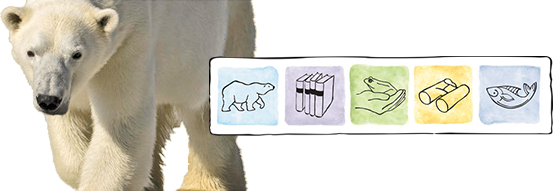Integrating Measures of Fecal Glucocorticoid Metabolites and Giving-Up Densities to Assess Adrenocortical Activity and Well-Being in Zoo-Housed Three-Banded Armadillos (Tolypeutes matacus)
To monitor adrenocortical activity in zoo-housed species, we propose using physiological and behavioral indicators that are non-invasive and practical to implement. We explore this model in the southern three-banded armadillo (Tolypeutes matacus; armadillo), which is a near-threatened species commonly found in zoos. We aimed to (1) deploy food patches to quantify foraging behavior (via giving-up […]
Assessment of contrafreeloading preferences in giraffe (Giraffa camelopardalis)
Contrafreeloading is an intriguing phenomenon in which animals will work to obtain resources, such as food, when the same resource is simultaneously freely available. Multiple hypotheses exist for why animals might choose to contrafreeload. In this study, we assessed preferences for contrafreeloading in giraffe at the Bronx Zoo to determine whether they actually preferred to […]
Laboratory birds: refinements in husbandry and procedures
None
The effect of quality and availability of foraging materials on feather pecking in laying hen chicks
Feather pecking resulting in feather damage, injuries and mortality causes severe welfare problems in laying hens. In the present study, we tested whether there is an inverse relationship between feather pecking and foraging behaviour (exploratory and manipulative behaviour away from the feeder). Forty-eight groups of 30 or 31 chicks, Gallus gallus domesticus, were reared in […]
Foraging opportunity and increased physical complexity both prevent and reduce psychogenic feather picking by young Amazon parrots
Although many authors have suggested that the quality of the cage environment contributes to the development and performance of psychogenic feather picking by parrots, there is little scientific evidence for this relationship. In chickens, there is an established relationship between absence of foraging opportunity and the performance of a similar behavior, feather pecking. Thus, we […]
Increasing energy expenditure for a deep-diving bird alters time allocation during the dive cycle
How foraging animals respond to changes in energy costs is poorly understood. Energy costs are especially important for central-place foragers because they determine transit costs as well as foraging costs. For example, oxygen consumption during diving determines the minimum surface pause for a given oxygen store, dive depth and dive duration. A theoretical model based […]
Rush and grab strategies in foraging marine endotherms: the case for haste in penguins
The speed at which air-breathing marine predators that forage by diving should swim is likely to depend on a variety of factors that differ substantially from those relevant in animals for hich access to oxygen is unlimited. We used loggers attached to free-living penguins to examine the speed at which three species swam during periods […]
Over-sized pellets naturalize foraging time of captive Orange-winged Amazon parrots (Amazona amazonica)
Parrots held in captivity experience distinctly different environmental demands, as compared to their wild conspecifics, particularly in regard to feeding. Cages equipped with computer-monitored infra-red beams (placed across a primary perch, in front of the feeder, in front of the drinking fount, and at the peak of the cage; interruption of a beam indicated a […]
Frustrated Appetitive Foraging Behavior, Stereotypic Pacing, and Fecal Glucocorticoid Levels in Snow Leopards (Uncia uncia) in the Zurich Zoo
This study hypothesized that permanently frustrated, appetitive-foraging behavior caused the stereotypic pacing regularly observed in captive carnivores. Using 2 adult female snow leopards (Uncia uncia), solitarily housed in the Zurich Zoo, the study tested this hypothesis experimentally with a novel feeding method: electronically controlled, time-regulated feeding boxes. The expected result of employing this active foraging […]
The costs of chronic noise exposure for terrestrial organisms
Growth in transportation networks, resource extraction, motorized recreation and urban development is responsible for chronic noise exposure in most terrestrial areas, including remote wilderness sites. Increased noise levels reduce the distance and area over which acoustic signals can be perceived by animals. Here, we review a broad range of findings that indicate the potential severity […]


